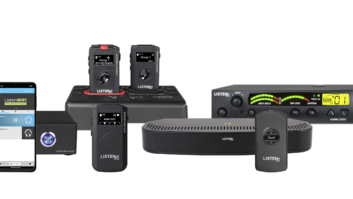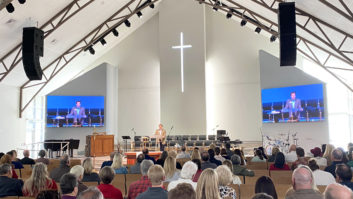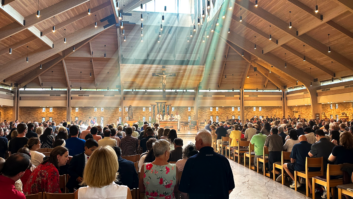 What have been the main advances in assistive listening technology over the past few years?
What have been the main advances in assistive listening technology over the past few years?
Innovation in personal technologies such as smartphones and hearing aids have led to innovation in assistive listening technologies to better integrate with personal devices.
Have the requirements and needs of hearing-impaired people changed in recent years and how has technology adopted to meet these?
I think there are three key things that have led to innovation in assistive listening solutions:
• There is a global push to create accessible experiences using technology in all venues and public spaces, and the younger generations are part of that push as they are comfortable advocating for themselves, for inclusive experiences, and for their ageing parents.
• Smartphones and hearing aids have become more sophisticated, leading to a demand for more discreet solutions for assistive listening.
• The COVID-19 pandemic influenced the need for technology due to physical/social distance requirements and safety measures put in place by global and local health regulations.
Are established technologies such as induction loops, infrared and FM/DM still dominant or are newer technologies such as Wi-Fi and Bluetooth connectivity to smartphones becoming more widely used?
For the foreseeable future, there will always be a place for induction loops, infrared and FM technologies due to a variety of factors including venue size and structural challenges, government requirements (such as security and encryption), and venue preference. Newer technologies are becoming more widely adopted because of ease of installation, end-user preference, and they generally cost less than traditional systems, and we will continue to see additional features and functionality added to meet the demands of end users and venues.
What are the respective pros and cons of the available technologies?
Every technology has its place and oftentimes several solutions will work in the same space. It comes down to venue preference, as some technologies require a bit more management on the side of the venue, and cost more to install and maintain.
Induction loop works directly with hearing aids and cochlear implants that include a telecoil (or t-coil). If an end user with a hearing aid does not have a t-coil, they would have to check out a venue-provided receiver. Induction loop is typically installed under the flooring around the perimeter of a room, which works fine in new construction, but is more difficult and expensive in retrofit installations.
FM or RF systems work like an FM radio with different channels for different audio streams or multiple languages. End user’s check-out a receiver from the venue, and either listen to the locked channel, or self-select their channel based on the audio stream or language they want to listen to. FM systems require very little maintenance once they are installed and have a simple user interface making it easy for end users.
Infrared systems are very similar to FM systems but use infrared light to transmit sound vs an FM signal. One significant difference of infrared is security. Since light can’t travel through walls, the audio signal is confined to the room, providing a secure audio signal for private spaces such as courtrooms, government facilities, and corporate boardrooms. Infrared systems require end users to check out a receiver from the venue, are cost-effective and require very little maintenance once they are installed.
Newer technologies such as Wi-Fi and BLE are quickly becoming a preferred choice for assistive listening because of simple venue installation and intuitive user interface. Wi-Fi systems provide a discreet experience for end users since they can use their own smartphone or checkout a smartphone receiver provided by the venue. Wi-Fi systems work on the venue’s network and cost less than traditional assistive listening systems. BLE will also become a viable option for assistive listening technology with the current focus on innovation in the Bluetooth space. Future solutions will support various personal assistive listening applications in multiple markets.
Regarding headphones in transparency mode, it’s playing a part in ALS for sure, mostly in raising awareness and reducing the stigma often associated with using assistive listening devices. It’s worth noting that transparency mode doesn’t provide the same audio quality as broadband amplification of ambient sound and is not the best method to help people hear better in most applications. One big differentiator of a dedicated assistive listening system is that the intended audio is amplified and delivered right to the end users’ ear, without the ambient background noise, which for most people can be a big distraction.
Click here to read our special report on assistive listening technology.







